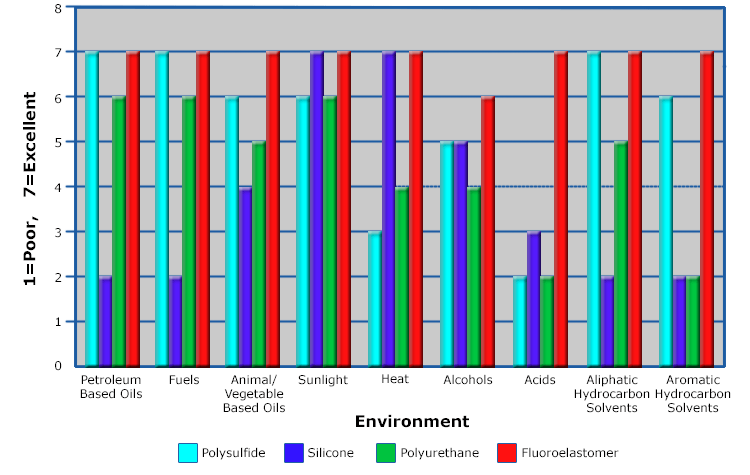Outstanding resistance to high heat. Typical operating temperatures from -40 to +400 degrees Fahrenheit (-40 to +205 degrees Celsius) with excursions to +500 degrees Fahrenheit.
Fluoroelastomers generally exhibit toughness and strength, but low molecular weight ketones and esters (i.e. Methyl Ethyl Ketone, Acetone, Ethyl Acetate) are not compatible with fluoroelastomer products. Amines will degrade fluoroelastomer products as well.

When particles impact a rigid surface (steel, brick, etc.) as illustrated in Fig. A, the energy is not efficiently absorbed by the surface, and over time, erosion will result.
If the surface is coated with an elastomeric coating as illustrated in Fig. B, the energy will be absorbed by the flexing of the surface, and much less erosion will be observed.

Viton™ and any associated logo is a trademark or copyright of THE CHEMOURS COMPANY FC, LLC used under license by Pelseal® Technologies, LLC
Dyneon™ is a registered trademark of 3M.
Latest News
![]() Commercial Boiler Corrosion Solved with Pelseal Viton™ Caulk (read)
Commercial Boiler Corrosion Solved with Pelseal Viton™ Caulk (read)
Flanges leaking acid? You need FLANGE PELSEAL, our liquid Viton caulk. See the independent test results in our new photo brochure. (read)
Pelseal Technologies Featured In SULFURIC ACID TODAY Magazine (read)
Pelseal Technologies New PLV2020 Aerosol Coating Features the Properties of Viton™ Fluoroelastomer in a Convenient, 12 oz. Spray Can (read)
Please call us at 215-245-0581 to discuss your application or simply fill out this form and someone from Pelseal will respond promptly.
3161 State Road, Ste. G
Bensalem, PA 19020
Phone: 215-245-0581
Fax: 215-245-7606
sales@pelseal.com
Disclaimer: Information and suggestions supplied by Pelseal® Technologies, LLC ("Pelseal"), whether in published literature or otherwise, including samples, are based on technical data that Pelseal believes to be reliable. Such information and suggestions are supplied without charge and their use, and the use of Pelseal's products, are beyond Pelseal's control. Pelseal's products, information and suggestions are intended for use by persons having technical skill and know-how in the industry. Such persons are responsible, at their sole discretion and risk, to satisfy themselves regarding the suitability of Pelseal's products, information and suggestions for their particular use and circumstances. Any handling precaution information is given with the understanding that those using it will satisfy themselves that their particular use conditions present no health or safety hazards. NOT FOR RESIDENTIAL USE.